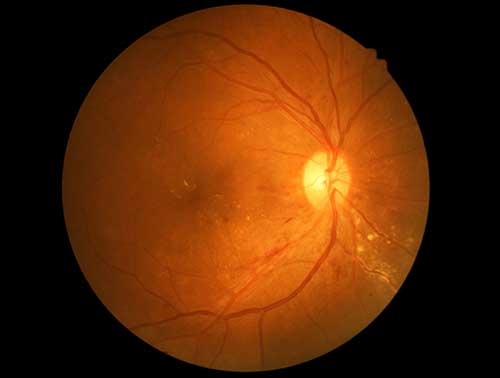
A common complication related to diabetes is poor circulation. When that affects the eye, it can lead to bleeding in the eye, development of scar tissue, and retinal detachment. Diabetes can also be the underlying cause of swelling, leading to blurry vision or loss of vision. Dr. Bianco customizes his approach for each patient, and he says that in most cases, patients can expect excellent results. If it is caught early, he can treat the retina with a laser in the office to control progression. If it progresses to hemorrhage in the eye or retinal detachment, the patient might need surgery. Swelling in the eye can be treated with laser or with new injectable medicines that dry out the swelling.
What is diabetic retinopathy?
Diabetic patients can get two complications related to their their eyes. Firstly, their poor circulation throughout the eye can cause bleeding and hemorrhaging, scar tissue buildup, and even retinal detachment. Second, they can get swelling in the back of the eye or retina that affects their vision.
Can it be treated?
Yes, and the sooner it is treated (and detected), the better the outcome. Diabetics need annual eye exams to detect diabetic retinopathy early.
How is it treated?
There are three main approaches we take depending on the stage and severity of the retinopathy. Firstly, we use an in-office laser on the retina to try and heal it. Second, if and whenever necessary, we use intraocular injections of Eyelea, Lucentis, or Avastin. Those help improve circulation and dry up fluid buildup. Lastly, as a final resort, there are surgical options to help patients get their vision back.
Does it cause blindness?
Yes, it is the leading cause of blindness in the U.S. We can treat it, but it is up to the patient to maintain good blood sugar and blood pressure throughout their life. Poor control of either can lead to blindness.
What causes diabetic retinopathy?
Anything that affects circulation and super small blood vessels in a negative way can cause it—for example, high blood sugar and high blood pressure.
 Book
Book Call
Call Map
Map Hours
Hours